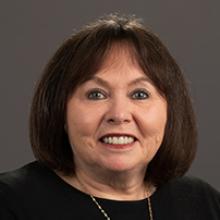Moving Forward, Looking Back: Landmark Legislation for Americans with Disabilities
![]() Download a printable, accessible PDF of this essay
Download a printable, accessible PDF of this essay
On the 25th anniversary of the Americans with Disabilities Act (ADA) and the 40th anniversary of the Individuals with Disabilities Education Act (IDEA) in 2015, AIR experts reflect on an era of research in the classroom and the workplace, their stories, and the future.
On November 30, 1975, President Gerald Ford signed into law the Education for All Handicapped Children Act. It is a sign of enormous cultural shifts that the law’s title and outdated nomenclature are barely remembered. Not until 14 years later did Sen. Tom Harkin (D-IA) introduce the amendment changing its name to the one used today: the Individuals with Disabilities Education Act, or IDEA.
Together with a bill Harkin submitted a year earlier—the Americans with Disabilities Act (ADA), signed into law by President George H.W. Bush on July 26, 1990—the laws remain the fundamental legislative signposts for people with disabilities. The two provide for greater inclusion and accountability in the nation’s school system—and in the workplace, protect basic civil rights and spell out requirements for reasonable accommodations.
This year marks major twin anniversaries of those laws. The ADA turns 25 and the IDEA turns 40.
In commemoration, we talked about the laws with experts at the American Institutes for Research, some of whom have been following the acts since their passage. They offer a split picture. While the roughly 56.7 million Americans living with disabilities have made great strides, they still have low graduation rates and high unemployment. AIR’s experts talked about those effects—on the education and livelihood of people with disabilities, and on their own lives and research.
IDEA and the Pursuit of Quality Instruction for All

Danielson, now a managing director at the American Institutes for Research, has spent a career following the trajectory of the seminal law, including at the U.S. Department of Education’s Office of Special Education Programs (OSEP), where he led IDEA national programs.
When the law that later became the IDEA passed in 1975, conditions for students with disabilities were unthinkable by today’s standards. Many of these children were warehoused in institutions. When included in the general classroom at all, they were frequently ignored and relegated to the back where they were left to draw in coloring books.
The mother asked me, "What’s going to happen next?" I said, "On Monday, the school bus is going to pick your daughter up." She about fainted and started crying.
During that first week on the job, Danielson’s boss handed him a sheet of paper with the names and phone numbers of families in the region believed to have children with disabilities who had never gone to school. One of the first calls was to a home of a Methodist minister whose young daughter had cerebral palsy. Though her speech was unintelligible, she was high functioning, with an IQ of 120.
“I had conducted an evaluation of the child, and the mother asked me, ‘What’s going to happen next?’” Danielson recalled. “I said, ‘On Monday, the school bus is going to pick your daughter up.’ She about fainted and started crying. It’s just remarkable the changes that happened in 1975.”

Danielson is now the director of the National Center for Intensive Intervention (NCII) at AIR. His work reminds us that despite the paradigm shift the IDEA brought about in the rights of students with disabilities to an education, more needs to be done.
Changes that came in the mid-1990s permitted students with disabilities to take the National Assessment of Educational Progress (NAEP) with accommodations, and IDEA’s 1997 reauthorization required students with disabilities to be included in state and local assessments. But, Danielson said, despite policy shifts that many hoped would have led to greater progress, NAEP achievement numbers remain “quite flat.” In 2013, for example, 69 percent of fourth graders with disabilities and 60 percent of eighth graders with disabilities lacked even basic reading skills. The numbers of students who lacked basic math skills are similar: 45 percent for grade 4 and 65 percent for grade 8.
“In many respects, we’ve come a long way since 1975 in terms of ensuring that students with disabilities have access to school,” he said. “However, there are still many kids who don’t have access to the instruction they need.”
NCII, a five-year technical assistance center funded by OSEP, is an attempt to push the needle forward. It is grounded in Response to Intervention, or RTI, a three-tiered system of academic support with cascading interventions that grow more intense the more students face chronic academic or behavioral problems. An estimated 2.5 million students—5 percent of the general school population—require intensive academic interventions, and an estimated 1.5 million students require intensive behavioral interventions.
Synthesizing research on intensive intervention, the center currently focuses on 24 schools in 12 school districts in four states: Michigan, Minnesota, Mississippi, and Rhode Island. It offers training and mentoring to teachers based on the idea of data-based individualization, which relies on assessment data to determine when and how to intensify interventions in reading, mathematics, and behavior.
Based on the center’s work in these four states, Danielson and his colleagues plan to “scale up” their findings at schools across the country. Acknowledging that is a “heavy lift,” Danielson said NCII is developing case studies of schools that are doing intensive intervention extraordinarily well.
“Even though it’s just a handful of schools, it invalidates the argument that it can’t be done,” he said.
“If there were one research idea I’d want to see implemented in every school, it’s Response to Intervention. It’s a good framework. It’s not fancy. But it organizes the school so that everybody should get good, solid instruction. Everybody gets screened, and those who need additional help get it.
It takes time and dedication to get all the pieces in place. One non-negotiable is that the schools we deal with have to have strong leadership. If the leadership doesn’t support it, RTI is going to flop at the school level.”—Stephanie Jackson, AIR managing researcher
Self-paced Instruction for Students with Disabilities
Advances in technology have put a new emphasis on the “individual” aspect of the IDEA.
Until relatively recently, in-school technology for students with disabilities typically meant large, cumbersome devices kept in a resource room. Students had to go down the hall, or sometimes to another building, to use them.
Today, the ubiquity of tablet computers and smartphones means that such functions as closed captioning and text-to-speech are within reach.
 “The focus in IDEA has shifted from how the student needs to adapt to the school to, in many instances, how the school needs to adapt to the needs of the student,” said Tracy Gray, a managing researcher at AIR. “Technological innovation has allowed that happen.”
“The focus in IDEA has shifted from how the student needs to adapt to the school to, in many instances, how the school needs to adapt to the needs of the student,” said Tracy Gray, a managing researcher at AIR. “Technological innovation has allowed that happen.”
The implications of that sea change are enormous at a time when, statistics show, roughly 60 percent of students with disabilities spend more than 80 percent of their time in the general classroom. It is here where such concepts as “personalized learning” and “differentiated instruction” are critical for students who need to learn at their own pace.
The focus has shifted... to how the school needs to adapt to the needs of the student. Technological innovation has allowed that happen.
“If you’re struggling with your multiplication tables, but the students around you are not, we can differentiate the instruction so that you can get the kind of curriculum supports and activities you need that enable you to learn at your own speed,” Gray said. “And students who don’t need as much remediation and time can have their curriculum segmented and move on with their learning.”
That’s where PowerUp WHAT WORKS comes in. Started in 2009 with funding from the U.S. Department of Education’s Office of Special Education Programs, PowerUp WHAT WORKS provides customizable materials, videos, lessons plans, and professional development activities online to enhance learning for students with differing needs.
Keeping up with rapidly changing technology and user expectations is important. Gray, PowerUp’s director, notes that the site has had three redesigns to keep pace with advances in Web functionality. But for the many teachers who work in schools with subpar broadband infrastructure, staying ahead of the curve can be a difficult proposition.
Teachers also lack the luxury of time. That’s why the site makes it easy to dive deeply or to find “grab and go” solutions they can use right away.
“Teachers don’t have two or three hours to spend on their own professional development,” Gray said. “What they want are curated resources, examples, and tools that they can use to enhance their skills and improve their practice.”
It has been a long journey for Gray, who first worked with students with disabilities in an undergraduate work/study program at the University of California-Riverside, whose flat campus became one of the nation’s first wheelchair accessible colleges in the early 1960s.
The law has pushed students with disabilities into the mainstream classroom. But technology is paving the way for a new shift, making tools initially targeted to students with disabilities available to all.
“What we’re finding,” she said, “is that differentiation and personalization are meaningful concepts for everyone.”
Opening Doors for Quality Research
The advent of the ADA opened doors not only for people with disabilities, but for scores of researchers who, until then, had few opportunities to see their ideas put into practice.
John Westbrook, a managing researcher at AIR, witnessed the changes as they were unfolding. “The ADA is a very strong statement,” he said. “Before the ADA, most research in the disability field was descriptive. The ADA helped encourage research into interventions that would effectively accomplish a variety of things, from community integration and transportation to simply being able to go to the grocery store.”
of things, from community integration and transportation to simply being able to go to the grocery store.”
But 25 years later, only about one-third of people with disabilities who say they want to work actually do work. To Westbrook, this statistic is evidence that the gulf between research and practice remains.
“This look at employment research is very, very important because the employment of people with disabilities has been stubbornly low,” he said. “Our research has not had enough traction to budge those numbers.”
The ADA helped encourage research into interventions that could accomplish things, from community integration and transportation to simply being able to go to the grocery store.
Westbrook is trying to change that. He directs two national centers at AIR’s Austin, Texas, office, both funded by the National Institute on Disability, Independent Living, and Rehabilitation Research: the Center on Knowledge Translation for Employment Research (KTER) and the Center on Knowledge Translation for Disability and Rehabilitation Research (KTDRR).
Popularized by Canada’s health care system, among others, knowledge translation provides analysis of high-quality research so that practitioners can make informed decisions. KTDRR staff offer tools and training for synthesizing and sharing research from multiple studies. KTER helps make employers aware of researched based-supports to aid workers with disabilities. (A third such program run by AIR, the Model Systems Knowledge Translation Center, pertains to those with spinal cord, burn, or traumatic brain injuries.)
Research on disability is notoriously difficult. In “The Challenge of Evidence in Disability and Rehabilitation Research and Practice,” Westbrook and his co-authors lay out some of the reasons. Sample sizes, for example, can be small due to the diverse and highly individualized nature of disability. Practitioners and people with disabilities understandably have ethical qualms about denying services to control groups.
“Those difficulties affect the power of the research and the generalizability of the research results,” Westbrook said.
Given those difficulties, Westbrook and his colleagues try to provide employers with as much evidence as is available—not just the results of one study.
Working with the Campbell Collaboration in 2013, the program systematically reviewed the effectiveness of programs aimed at integrating school-age youth with autism spectrum disorders (ASD) into community based jobs. The estimated 1.5 million Americans with ASD experience extremely high unemployment rates, high even among other people with disabilities.
Very limited research was available, the review found, and few studies linked employment to the quality and effectiveness of the transition-to-work program. But some programs that may have helped increase effectiveness were identified, and continued aggregation of the results of current and future studies will help direct research leading to more evidence-based decision-making. In the first few months after its publication, the systematic review was downloaded 50,000 times, revealing the  disability community’s desire for high quality evidence.
disability community’s desire for high quality evidence.
“People benefit from high quality research centered on questions relevant to their issues, and can be negatively affected by policies and practices based on research that is not rigorous,” said Kathleen Murphy, a senior researcher in AIR’s Austin office. “Ensuring those two outcomes—relevance and rigor—is the goal of knowledge translation, and should undergird all disability and rehabilitation research and knowledge translation projects.”
“There tends to be this idea of research for research’s sake. Researchers tend not to think about consumers, the very people who are going to use their work. But consumers are critical to knowledge translation. I believe research could be made more useful by involving key stakeholders from the beginning. Consumers should be involved in the entire research process, from inception and implementation through the dissemination process.”
—Xinsheng “Cindy” Cai, AIR senior researcher and co-director of the Model Systems Knowledge Translation Center
Reporting on 25 Years of Hard-Won Victories
In 2014, the National Council on Disability’s annual progress report offered a sobering array of statistics related to people with disabilities: a school dropout rate more than twice the national average, a stubborn employment rate of 33.5 percent and more than 420,000 workers making sub-minimum wage.
For the 25th anniversary of the ADA, the 15-member, presidentially appointed council decided to take a different direction, focusing instead on four states and one major city that are doing innovative work in employment, education, health care, transportation and housing.
Doing the right thing when it comes to disability rights is hard work.
The report, which will be released by the Council at its annual meeting on July 23 before going on to Congress and President Obama, is far from Pollyanna-ish. In fact, its message could well be that doing the right thing when it comes to disability rights is hard work. It means overcoming the odds in the political arena and, often, in court.
 “Our state and city collaborators were really forthcoming,” said Cynthia Overton, a principal researcher at the American Institutes for Research and project director on the report for the last two years. “It takes a lot of courage to not only talk about what worked well, but also the obstacles they overcame. But unless people tell these kinds of stories, we’re not going to make any progress.”
“Our state and city collaborators were really forthcoming,” said Cynthia Overton, a principal researcher at the American Institutes for Research and project director on the report for the last two years. “It takes a lot of courage to not only talk about what worked well, but also the obstacles they overcame. But unless people tell these kinds of stories, we’re not going to make any progress.”
Massachusetts, for example, developed an architectural survey to identify common barriers for people with disabilities. Based on comments from people with disabilities and advocacy groups, the survey was initially created to deal with a lack of accessibility at mammography centers. Later , it was expanded to apply to other types of medical facilities. Now, despite some initial pushback from hospitals and health care providers, mammography centers in the state self-report findings from the Massachusetts Facility Assessment Tool on a public website. Other states, including Montana and Oregon, have adopted and modified their own versions of the tool.
I sometimes wonder how things would have been different if I’d experienced my disability earlier, when buildings were not compliant. I’m able to function due to provisions in the ADA.
The ADA also contains provisions that promote accessible transportation options. But according to a 2010 study, 34 percent of people with disabilities reported inadequate transportation, compared to 16 percent of people without a disability.
In New York City, taxis transport an estimated 1 million passengers a day. Historically, however, many could not accommodate passengers in wheelchairs. Some drivers refused to pick up people with service animals. Such incidents sparked a class action lawsuit by disability advocates under the ADA. After a settlement, the number of accessible yellow taxis grew from 231 to 573, and the city introduced 1,003 wheelchair accessible green taxis. The city began a plan to introduce 16,900 accessible taxis by 2024. For passengers with visual impairments, the city also introduced audible touch screens in select taxis that announce fare changes, verify fares and give information on tipping and paying with a credit card.
Such stories have personal resonance for Overton, who in 1997 became paralyzed from the waist down when a lesion was removed from her spinal cord. She was able to walk again only after intensive therapy. Though she considers herself “very fortunate” to work in a field that relies on her mind rather than her body, Overton sometimes needs a cane to walk and uses the automatic door opener to get in and out of work.
“I sometimes wonder how things would have been different if I’d experienced my disability earlier, when buildings were not compliant,” she said. “I’m able to function due to provisions in the ADA.”
The Road from Research to Practice for Students with Disabilities
In a recent article, “Implementing Intensive Intervention: How Do We Get There from Here?” Rebecca Zumeta Edmonds poses a question on the minds of many researchers and educators who work with students with
Zumeta Edmonds, a principal researcher at AIR, notes progress on three fronts:
- The 1997 amendments to the IDEA that required students with disabilities to participate in large-scale assessments, providing crucial data highlighting the population’s most persistent needs.
- A growing body of evidence-based interventions targeting at-risk learners.
- Progress in screening procedures that have the potential to permit more efficient identification of students with intensive needs and a timelier, more accurate evaluation of their progress.
Nonetheless, she writes in the April issue of Remedial and Special Education, roadblocks remain: “Persistent low achievement suggests that despite growing intervention resources, schools continue to struggle to access and implement them with sufficient intensity to meet the needs of many students with disabilities.”
It is a frustration she first experienced early in her career, when she was a special education teacher in Seattle. “There was a lack of connection between research and practice,” she said. “It was very evident how little most teachers knew about evidence-based practice. I just didn’t understand why there were important studies sitting in journals that teachers and schools knew nothing about.”
For Zumeta Edmonds, the response to “Can’t get there from here” is technical assistance.
As deputy director of the National Center for Intensive Intervention, her work focuses on the estimated 2.5 million students who require intensive academic interventions and the roughly 1.5 million students who require intensive behavioral interventions (see Louis Danielson, above). She is also project director of a 4-year Investing in Innovation (i3) grant awarded last year by the U.S. Department of Education to develop intensive supports in mathematics.
The 2013 National Assessment of Educational Progress (NAEP) found that just 18 percent of fourth graders with disabilities exceeded proficiency targets in math, compared to 45 percent of those without disabilities. For 8th graders, those numbers dropped to 8 and 29 percent, respectively. Despite attempts to address the problem, math interventions have proven to be especially tricky, even for high-performing schools. Working with the Franklin Pierce Schools in Tacoma, WA, AIR plans to implement and evaluate a program to increase mathematics achievement among 80 students with severe and persistent learning needs, including those with disabilities. The work is grounded in “data-based individualization,” a framework for intensifying interventions that uses student assessment to determine when and how such supports need to be modified.
In bridging the gap between research and the classroom, it helps not only to have solid evidence, but “street cred” as a former special education teacher.
“We found in the technical assistance work we were doing at the center that, for a variety of reasons, there was a lot of reticence to do tiered intervention work in math,” she said. “The i3 study will help us understand what is needed to see results in mathematics, which is something we have not seen more broadly.”
In bridging the gap between research and the classroom, it helps not only to have solid evidence, but “street cred” as a former special education teacher. Zumeta Edmonds found that teachers listen more if you understand their workloads, including the extensive planning and paperwork that go into the Individualized Education Programs (IEPs) mandated under the IDEA for students with disabilities.
“I think teachers are more likely to relate to you if you know what it’s like to have five IEPs due in a week, meetings before and after school, and children in your class who no one wants to teach because they have challenging behavior,” she said. “When teachers realize you understand and can relate to how difficult their jobs are, they are much more likely to listen to what you have to say about the research.”
“I was teaching before kids in special ed were expected to perform on statewide tests. I’ve just seen time and again, students with disabilities will rise to the occasion. If you have high expectations for kids, both academically and behaviorally, they will rise to meet you. It’s not just theory. High expectations are everything in this field.”
—Melissa Edmiston, AIR principal researcher
The Persistent Earnings Gap
When labor economist Michelle Yin began studying the workplace participation of people with disabilities, she was initially surprised by how little research attention the issue had received.
 After all, Title I of the ADA prohibits workplace discrimination against “a qualified individual with a disability.” It seemed natural, 25 years later, that we’d have a wide range of research on the issue in hand.
After all, Title I of the ADA prohibits workplace discrimination against “a qualified individual with a disability.” It seemed natural, 25 years later, that we’d have a wide range of research on the issue in hand.
“There hasn’t been a lot of study in this area, especially at the local level,” said Yin, a senior researcher at AIR. “There hasn’t been a lot of money invested in this area. When you’re looking for high quality data, it hasn’t been easy.”
In 2014, her first look at the workplace situation compared the earnings of people with disabilities to their peers without disabilities. Yin found that workers with disabilities who have at least a high school education earn 37 percent less on average. Most surprising—and counter-intuitive— is that the disparity grew with the level of education. Those with disabilities who had a high school degree or equivalent earned an average $6,505 less than their peers in 2011. But for those with a master’s degree or PhD, the gap widened to nearly $21,000 on average.
“What we found was just shocking,” she said. “The result surprised us, not just because of the magnitude of the gap but because of the pattern. You’d think that people with higher educational attainment would see less of a disparity. In fact, people with master’s degrees or more had the largest disparities.”
What we found was just shocking. People with master’s degrees or more had the largest disparities.
Yin will continue her look at workers with disabilities in a new paper scheduled to coincide with the ADA’s 25th anniversary. This time around, she is zeroing in on labor participation rates, noting that for workers with disabilities, participation dropped from 25 percent in 2001 to 16 percent in 2014. Those rates have remained low, even though the economy as a whole has been growing.
“Despite the Federal policies, executive orders, and incentive programs intended to increase employment and employability of people with disabilities, labor market outcomes have not improved for this population in more than 40 years,” Yin writes.

Yin has broken down participation patterns by disability type and by state. For example, 25 percent of people with vision or hearing difficulties participated in the labor force, compared to about 15 percent of people with ambulatory difficulties. Among states, Alaska, Minnesota, and Wyoming have high participation rates across all disability types, while Arkansas, Kentucky, Tennessee, and West Virginia have low participation across disability types. But some regions showed wide variation. Despite a relatively low overall labor participation rate, Montana ranked in the top ten in labor participation rate for people with ambulatory difficulties.
The variability, Yin says, suggests that more research needs to be done on why some states are more effective than others. Her latest work also suggests that policies that target people with specific types of disabilities might show a stronger impact.
Putting Technology to Work for the Deaf, Hard-of-Hearing
Dahlia Shaewitz is intimately familiar with what is sometimes called deaf culture. Her mother, uncle, and several cousins are deaf. Her father was born hard-of-hearing. Growing up a hearing person in a deaf household was a sometimes peculiar experience.
For example, Shaewitz recalls, before pagers, texting, and email, her family had a teletype (TTY) device for the phone. But calling long distance got expensive due to the time it took to type everything out. “Sometimes, people would just show up at the house,” she said. “We’d get a letter saying, ‘We’re coming to D.C. in three weeks and we’ll be staying with you.’ Two days later, a family shows up because the mail took three weeks to get there. And then we had seven people staying all over the house signing until 3 a.m. because they were so hungry for conversation.”
Inevitably, some of that experience rubbed off. For example, as a principal researcher at AIR, Shaewitz is known for getting right to business at meetings. She attributes that to her upbringing. “Sometimes, deaf people are thought of as rude because they get right to the point,” she said. “Socializing and small talk come later. But that’s not rudeness. That’s just being deaf. There’s always this sense that conversation is precious and so there’s no time to waste.”
That understanding informs her work on a current project—ensuring that consumers with hearing loss have access to up-to-date knowledge on communication technology and how to use it. The project is part of a five year partnership with Gallaudet University, the Washington, D.C.-based university for the deaf, and is funded with a grant from the National Institute on Disability, Independent Living, and Rehabilitation Research.
It is easy to forget that people who are deaf or hard of hearing did not have access to phones until TTY was developed in the 1960s and nationwide relay services began in the 1990s. Closed-captioning for television was required and made available through built-in decoder systems in the 1990s. Around the same time, movie theaters installed caption display systems.
Nonetheless, more technology is needed, as are upgrades for existing devices. The use of interconnected smartphones now offers the promise of giving consumers unprecedented control of their assistive technologies. Unfortunately, research has shown, many consumers have trouble using their own hearing devices properly and when problems arise, frequently do not know how to engage with industry manufacturers to solve their problems.
Using a “train the trainers” model, the project is designed to produce 50 qualified trainers by the end of five years who can teach others about the best-available research on technology—in-person and online. The project will also engage manufacturers, particularly those in Silicon Valley, about ways to create products that factor in the needs of those with hearing loss.
“People with hearing loss need to engage,” said Shaewitz, a co-principal investigator on the project. “But how do they engage if they can’t hear, or if they don’t have a way to interpret information using a sense that works for them?”
It was such a momentous occasion, and it meant so much to my mother, that she dragged us down there to see it happen.
Reflecting on the ADA’s anniversary, Shaewitz acknowledged that when the law was enacted 25 years ago, its importance was lost on her. On July, 26, 1990, her mother shuttled her and her sister to a reception at the Hart Senate Office Building in Washington, D.C., where Sen. Tom Harkin (D-IA), the bill’s sponsor, and others were celebrating the signing of the law earlier that day.
“It was such a momentous occasion, and it meant so much to my mother, that she dragged us down there to see it happen,” Shaewitz said. “I didn’t understand at the time what it meant or what difference it would make.”
Today, of course, she views things differently. “The social acceptance of people with disabilities has shifted,” she said. “It’s like the movement for civil rights that gained momentum in the 1960s and led to new legislation. Culturally, many things have changed. But there’s still a long way to go before the promise of the law is fully realized.”
Further Reading
School Practices and Accountability for Students With Disabilities
Students with Disabilities Pocket Guide
An Uneven Playing Field: The Lack of Equal Pay for People With Disabilities
Long Story Short: Why Is Intensive Intervention Critical for Students with Disabilities?



